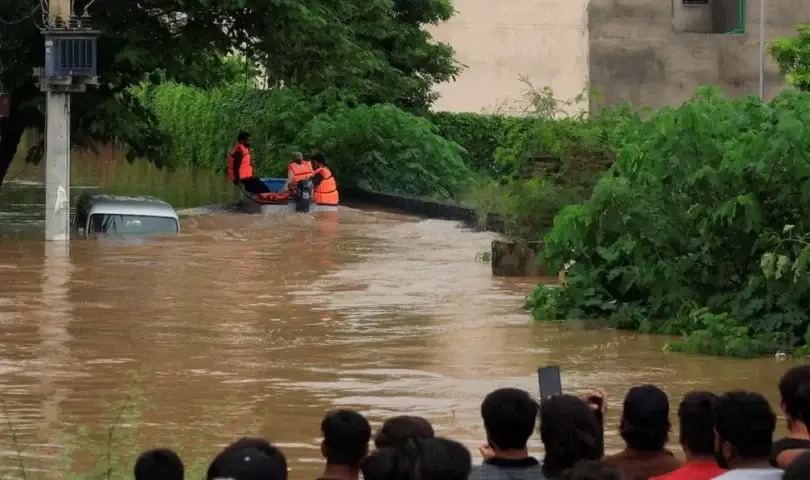LAHORE: Punjab is experiencing the largest flood in its recorded history, with the Provincial Disaster Management Authority (PDMA) warning of surging water levels across major rivers, threatening vast swathes of southern Punjab in the coming days.
As of Sunday, 260,000 cusecs of water were flowing through Kasur via the Sutlej River, while the flow at Head Sulemanki stood at 144,000 cusecs and was expected to swell to 175,000 cusecs by evening. PDMA Director General Irfan Ali Kathia said that volumes of 135,000 cusecs were moving towards Pakpattan, Bahawalnagar and Vehari, areas likely to be hit within 24 to 48 hours.
The authority further cautioned that water from the Ravi would merge with the Chenab by Sept 2, potentially affecting Kabirwala and Khanewal due to backflow. The highest volumes are currently being recorded in the Chenab, where an alarming rise was observed at Head Trimmu. “Within one hour, water at Trimmu increased by 100,000 cusecs,” said the DG, adding that flows may reach 700,000 cusecs by Sept 1.
Floodwaters are expected to move towards Multan, creating possible difficulties at Head Muhammad Wala and Sher Shah Bridge. Authorities have placed Multan on alert, with the flood expected to reach Head Panjnad by Sept 4 and enter Sindh by Sept 6.
So far, 2,200 villages have been inundated and two million people have been affected, the PDMA confirmed. At least 33 lives have been lost, while 750,000 people have been rescued. Boats and rafts are being used to evacuate residents and livestock, with relief supplies expected to reach affected areas by Sept 6.
Rainfall has compounded the situation, with heavy showers reported in Sialkot, Narowal and Gujrat. Drainage work is ongoing, though the Met office predicts rains will continue until Sept 2.
Meanwhile, Chief Minister Maryam Nawaz reviewed the situation at PDMA headquarters, where she chaired a three-hour meeting to assess rescue and relief operations.
‘All machinery mobilised’
At a press conference, Punjab Senior Minister Marriyum Aurangzeb described the situation as “unprecedented”, saying floods in the Ravi, Sutlej and Chenab had displaced millions. She confirmed that 32 people had died while “all machinery of the Punjab government is engaged in relief operations.”
She said two million people and 5.5m cattle had been shifted to safer places, while 7.5m people were housed in temporary shelters. Schools in affected districts have been converted into relief camps. “No loss of life has occurred due to negligence,” the minister stressed, adding that damage assessment would begin once water levels recede.
Districts including Jhang, Multan, Muzaffargarh, Okara and Vehari remain on high alert.
Read More: Sialkot schools shut as floods worsen
FFD data
According to the Flood Forecasting Division (FFD), extremely high flood levels were observed at Baloki (Ravi, 204,395 cusecs) and Gandasinghwala (Sutlej, 253,068 cusecs). High floods were also reported at Sulemanki (154,219 cusecs) and Qadirabad (225,138 cusecs). At Trimmu, flows surged to 361,633 cusecs.
NDMA’s role
Separately, the National Disaster Management Authority (NDMA) said it had dispatched ration supplies to six districts, including Narowal, Sialkot, Wazirabad and Hafizabad. Each relief package, weighing 46kg, contains 22 essential items. Coordination with provincial governments and the private sector continues under directives from the prime minister.





